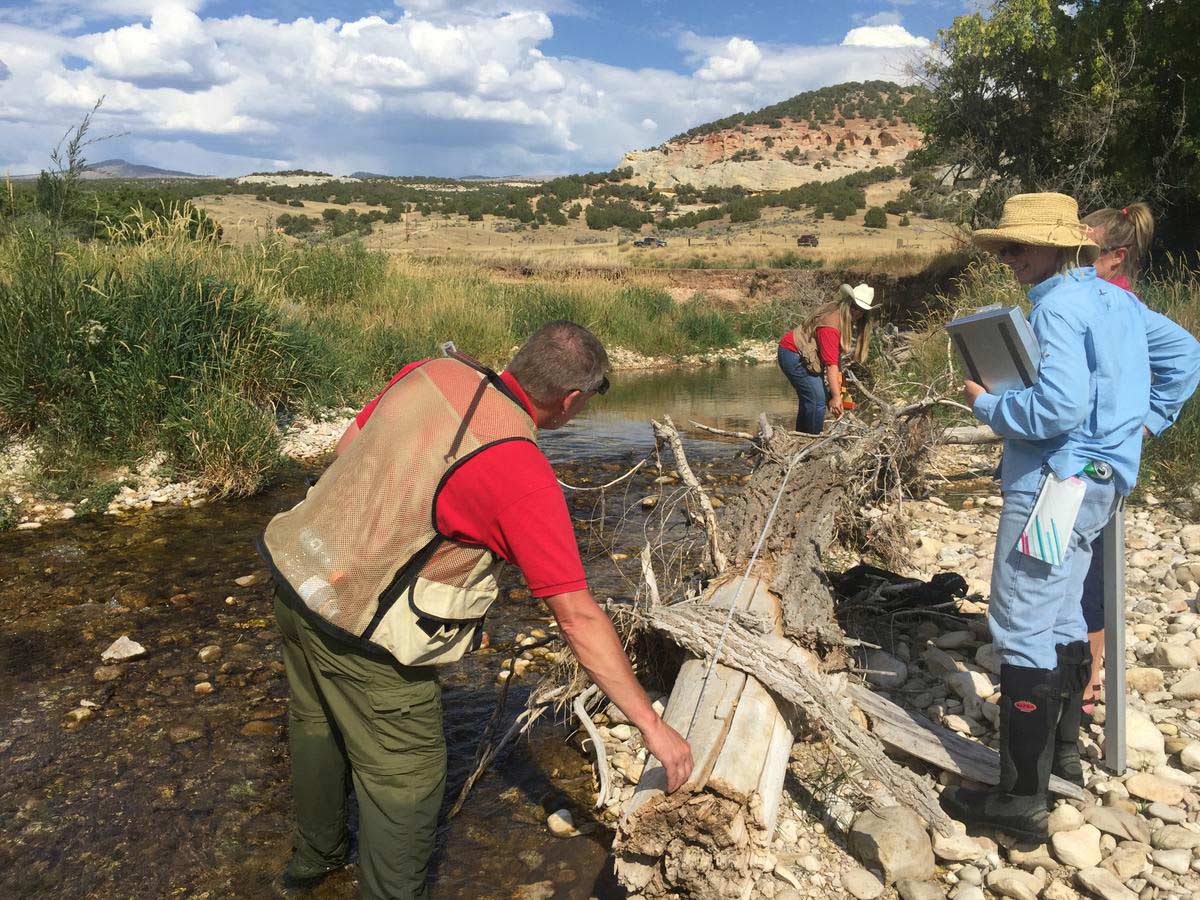SQT Field Camp
This course is for individuals who have taken the Stream Functions Pyramid and Quantification Tool Workshop and want further training on how to collect and enter field data into the Stream Quantification Tool (SQT). Four out of five days will be spent collecting field data using both the rapid and detailed methods. This is an intense course. It is designed for scientists and engineers who plan to use the SQT on a regular basis.
Prerequisite Information
This course is only offered to participants who have already taken the Stream Functions Pyramid and Quantification Tool Workshop.
Course dates:
November 3-7, 2025
Manchester, Tennessee

- Members of Interagency Review Teams, In-Lieu Fee Providers and Mitigation Bankers
- Federal, State and Local Agencies with regulatory responsibilities
- Stream restoration practitioners
- Clip board to hold field forms
- Scientific calculator
- Waders (we recommend hip boots and chest waders)
- Clothing for all types of weather
- Water bottle
- Laptop computer with Excel
Will Harman, PG
With 30 years of experience in fluvial geomorphology and stream restoration, Mr. Harman has designed hundreds of projects throughout the United States, which represent a wide range of conditions and challenges.
Mr. Harman spent the first half of his career working for North Carolina State University’s Cooperative Extension Service where he served as the state’s first Natural Resources Extension Agent. Later, he worked on campus where he co-founded the NC Stream Restoration Institute, now the NC Stream Restoration Program. At the university, Mr. Harman co-developed the River Course workshop series, led applied research projects, and completed stream restoration demonstration projects throughout the state.
Mr. Harman has spent the second half of his career in the private sector as a practitioner and educator. He has completed watershed assessments, stream assessments, and design projects throughout the United States, including Alaska. Mr. Harman is currently the owner of Stream Mechanics where he focuses on improving stream restoration and mitigation through the development of assessment and design-review tools. He developed the Stream Functions Pyramid Framework, which is being used by federal and state agencies, and private companies throughout the nation to implement function-based restoration projects. More recently, he co-developed a Stream Quantification Tool (SQT) to measure functional lift from stream restoration projects and functional loss from permitted impacts. The SQT is being used by mitigation programs to determine debits and credits.
Mr. Harman has a Bachelor’s degree from Appalachian State University in Geography and a Master’s degree from the University of North Carolina at Charlotte in Geography. He is a licensed geologist in North Carolina.
Paxton Ramsdell
Paxton is a natural resource professional with experience in state and federal policy, corporate sustainability, and landowner incentive programs. During his career, Paxton has worked with NGOs, state agencies, and private landowners to advance land conservation and habitat restoration. Prior to joining EPR, Paxton worked as a part of the team that developed the first SQT in North Carolina. At EPR, Paxton works with clients to regionalize the SQT and Debit Calculator and contributes to stream restoration projects. Paxton has a Bachelor’s Degree in Government from Hamilton College and a Master’s of Science in Forest Resources and Environmental Conservation from Virginia Tech. Paxton is based in EPR’s Raleigh, NC Office.
Cidney Jones, PE, CFM.
Cidney has 14 years of experience in stream restoration design, hydrologic and hydraulic analysis, stream restoration, and stream assessments. She received her Bachelor’s Degree in Engineering from Harvey Mudd College in 2010 and her Master’s Degree in Civil Engineering from Pennsylvania State University in 2013. She started assisting with the field days for the Stream Function Pyramid Framework courses in 2017 and has since been teaching and leading workshops and field training across the U.S. She has experience performing and providing instruction for hydrologic and hydraulic modeling; field surveying; geomorphic assessments; and GIS mapping and analyses. She is the co-developer of the Stream Quantification Tool and works with states to regionalize the tool.
